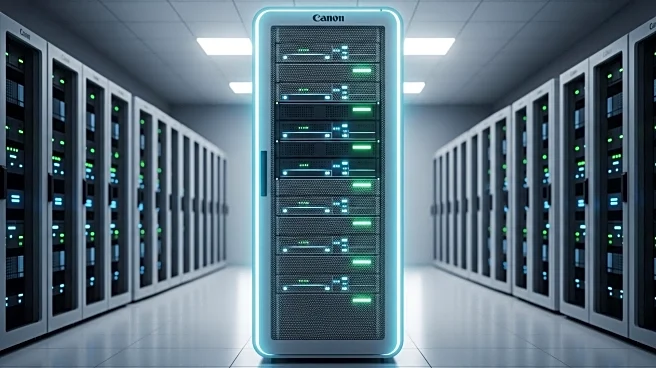What's Happening?
The rapid expansion of artificial intelligence (AI) technologies has led to a significant increase in the number of data centers across the United States. These facilities, essential for supporting AI and cloud computing, are known for their high consumption of water and electricity. A recent investigation has revealed that Virginia alone hosts a third of the world's internet traffic through its data centers. Despite their critical role in the digital economy, there has been a lack of transparency regarding the ownership, number, and energy consumption of these centers. The investigation highlighted the environmental challenges posed by these data centers, particularly in states like Arizona, where some facilities use up to a million gallons of water daily for cooling purposes. The power demands of these centers have also led some states to reconsider their carbon emissions targets, with power companies contemplating the extension of coal and gas plant operations to meet the growing energy needs.
Why It's Important?
The findings underscore the environmental and policy challenges associated with the burgeoning AI industry. As data centers continue to proliferate, their substantial resource consumption poses significant environmental concerns, particularly in regions already facing water scarcity and energy constraints. The pressure on states to balance economic growth with environmental sustainability is intensifying, potentially leading to policy shifts and increased regulatory scrutiny. Stakeholders, including environmental groups and policymakers, may push for more sustainable practices and transparency in the data center industry. The situation highlights the need for innovative solutions to mitigate the environmental impact while supporting technological advancement.
What's Next?
As awareness of the environmental impact of data centers grows, there may be increased calls for regulatory measures to ensure sustainable practices. States could implement stricter guidelines on water and energy usage, and companies might be incentivized to adopt greener technologies. The industry may also see a push towards renewable energy sources to power these facilities, reducing reliance on fossil fuels. Additionally, public pressure could lead to more transparency regarding the operations and environmental footprint of data centers, prompting companies to disclose more information about their practices.
Beyond the Headlines
The situation raises ethical questions about the trade-offs between technological advancement and environmental stewardship. As AI continues to drive economic growth, the industry must address its environmental responsibilities. This could lead to a broader cultural shift towards sustainability in tech, influencing how companies approach innovation and resource management. The challenge will be to balance the benefits of AI with the need to protect natural resources and reduce carbon emissions.













